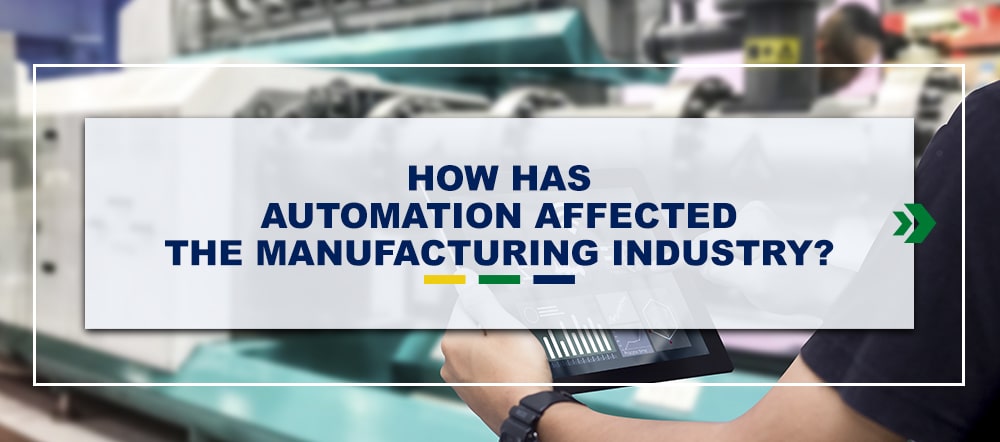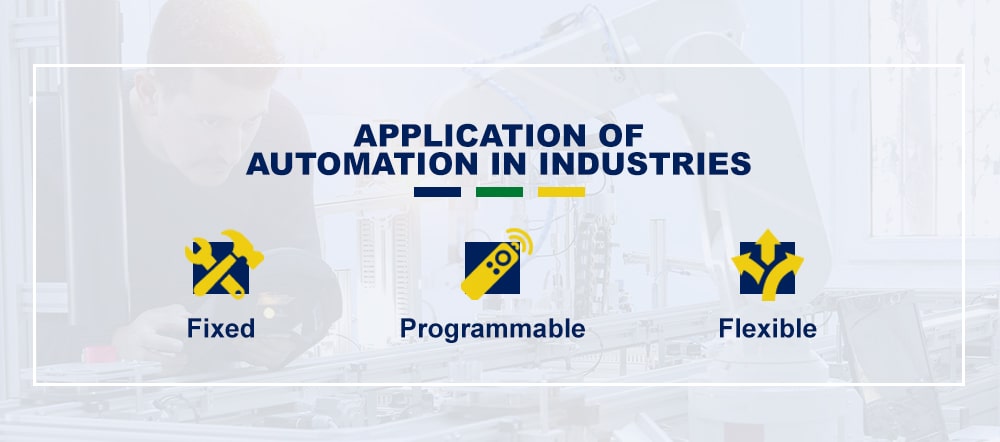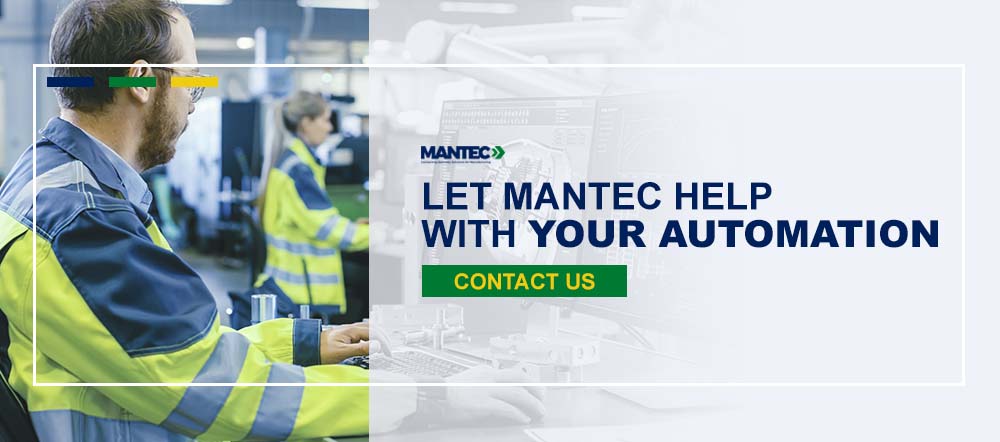In the fast-paced world of manufacturing, staying ahead often means embracing change. Soon, the only…

Quick Links
Affected the Manufacturing Industry?
History of Automation in Manufacturing
Application of Automation in Industries
The Effects of Automation in Manufacturing
Future of Automation
Let MANTEC Help With Your Automation
Affected the Manufacturing Industry?
One of the big conversations in the United States the past few years has been about the impact of automation. As technology continues to develop at a rapid pace, some have suggested that automation will end up replacing a significant portion of the workforce in certain industries, keeping people out of jobs. Others point to how automation will allow for a higher quantity and quality of products.
As the debate goes on, the manufacturing industry has repeatedly been upheld as an example of how automation could affect the workforce and the economy. But what has automation’s role been in manufacturing, and what is it doing now?
History of Automation in Manufacturing
Broadly speaking, automation is the application of machines to perform previously human-done or impossible tasks. The term originated with D.S. Harder, the engineering manager at Ford in 1946. But 1946 isn’t where automation started. It arguably began as far back as prehistoric times, with the invention of basic tools like wheels and levers. Following that, additional inventions like windmills and the printing press continued the trend.
The Industrial Revolution was where automation truly took off and where the manufacturing industry entered the picture. With the invention of the steam engine, factories suddenly became much more prominent. Previously they had been powered by things like waterwheels, which required them to be near a water source. With steam engines running their equipment, factories could be built anywhere. Combined with the other technological innovations of the period, this development enabled the rise of factory dominance. More goods were produced by factories instead of cottage industries, and more jobs were available for people in urban areas.
The late 1940s saw the invention of the first electronic computers, followed by integrated circuits in the 1960s that allowed for device miniaturization. As the decades rolled past, digital technology exploded into prominence, and the manufacturing industry was one of many to take advantage of what it had to offer. It started with rudimentary computers, but moved on to sensors and scanners. Most recently, manufacturers have begun to experiment with forms of artificial intelligence.

Application of Automation in Industries
Automation can take many different forms in the manufacturing industry, from robotic grabber arms to scanners. As a result, automation can interact with products in a large number of ways. In particular, manufacturers rely on three types of automation systems — fixed, programmable and flexible:
- Fixed: Fixed automation is designed to perform a single function. If you have an assembly line that is only used to make one product in one particular way, fixed automation is what you can use. Since it’s designed to do just one thing, it’s able to do it with maximum efficiency.
- Programmable: Programmable automation is designed to perform multiple functions. If you expect to manufacture a wide variety of things within a short period of time, you can use programmable automation to reprogram the solution to create different products. The downside to this type of automation is that it takes a significant amount of time to reprogram it, during which you’re not producing anything.
- Flexible: Flexible automation is the middle ground between fixed and programmable automation. While you can reprogram it to perform different functions, it’s only designed to work for a limited array of products. This feature allows you to use it for more than one product without taking huge chunks of time to reprogram it.
The Effects of Automation in Manufacturing
Reliance on automation impacts the manufacturing industry in a few different ways. Contrary to what many people think, the net impact is not inherently positive or negative. Automation comes with its fair share of good and bad qualities. Here are some of the main advantages and disadvantages of automation.
Advantages
When used correctly, automation can benefit the manufacturing industry significantly. These benefits can manifest in several ways, including:
- Reduced production time: Because machinery is able to operate more quickly and efficiently than human workers in many cases, it can help production move faster.
- Higher-volume production: Machinery can create products in less time and produce more of them within a given time frame.
- Less human error: Human workers are susceptible to misjudgment and forgetfulness, but these are mistakes machines don’t tend to make.
- Increased safety: Because people don’t have to be as involved with the production process, they’re able to stay safer. If something goes wrong on the assembly line, the worst-case scenario may be a broken machine part rather than an injured worker.
Disadvantages
The most often cited disadvantage of automation is that it will replace workers and leave people without jobs. This idea isn’t fully supported, though — history indicates that automation will likely create as many job opportunities as it closes. However, automation still has some notable pitfalls, including:
- Limited flexibility: Machines may be efficient, but they don’t have the versatility or creativity of human beings. If the slightest thing goes wrong, they can cease to work properly, whereas human workers can apply ingenuity to get around the problem.
- More pollution: Some automation results in higher pollution as it burns fuel and uses energy. This isn’t always the case, depending on the machinery being used.
- High initial cost: Automation can save manufacturers money in the long run since they don’t have to pay as many workers, but when it comes to the upfront cost of buying the technology, it can be incredibly expensive.
Future of Automation
The future of robotics and automation in manufacturing is expected to continue the already-established pattern. According to some predictions, the next few decades will see 60% of all occupations convert 30% of their tasks to automation. Additionally, more human-like automation is expected to appear — particularly in the field of artificial intelligence — to handle jobs previously limited to human beings.
This change won’t just affect manufacturing. Healthcare, package deliveries and transportation are just a few industries expected to experience this move to automation. Manufacturing will likely be right beside them to lead the way into our technological future.
Let MANTEC Help With Your Automation
The question of whether or not to automate your manufacturing business doesn’t come down to a simple yes or no. Even if you want to automate one part, you may not want to automate another. It comes down to what your business does and how it operates, and it can be tricky to figure it all out.
As a top manufacturing consultant in Pennsylvania, MANTEC can help you determine where you can most benefit from automating your manufacturing process. No matter your business’s size, we can get you the help you need to reach new levels of efficiency in your production. Just get in touch with us today to start your consultation process.



